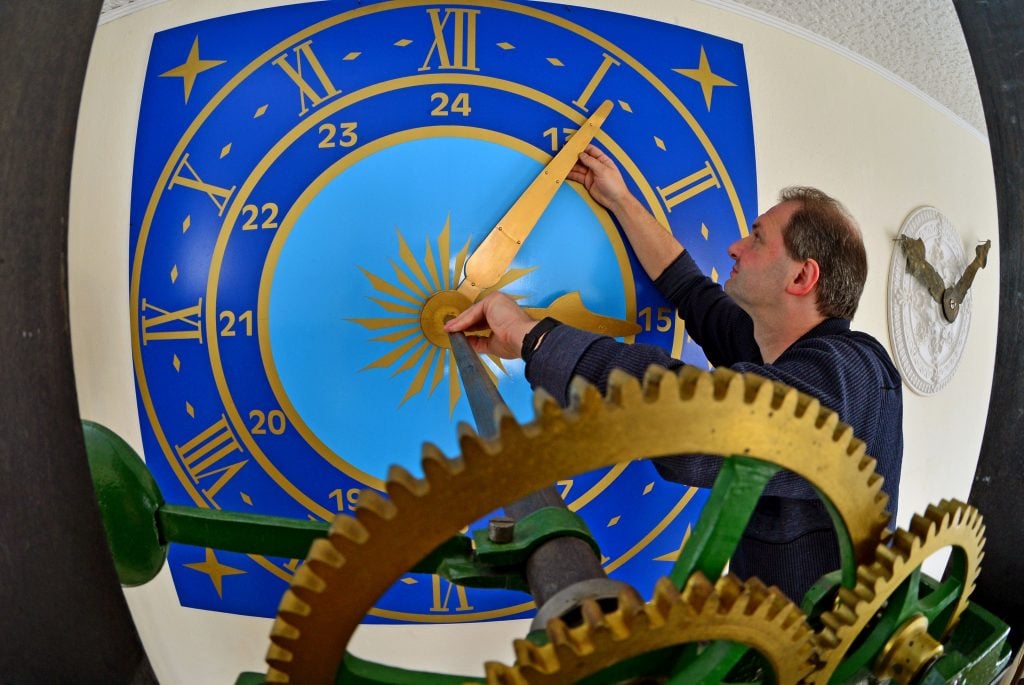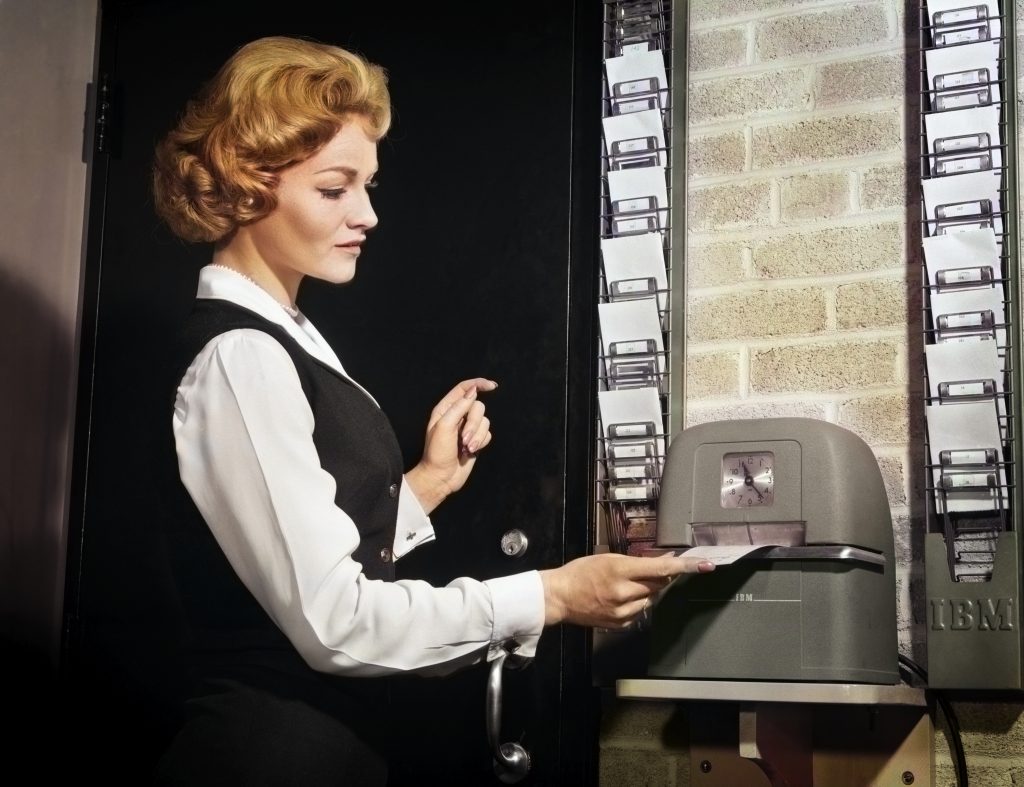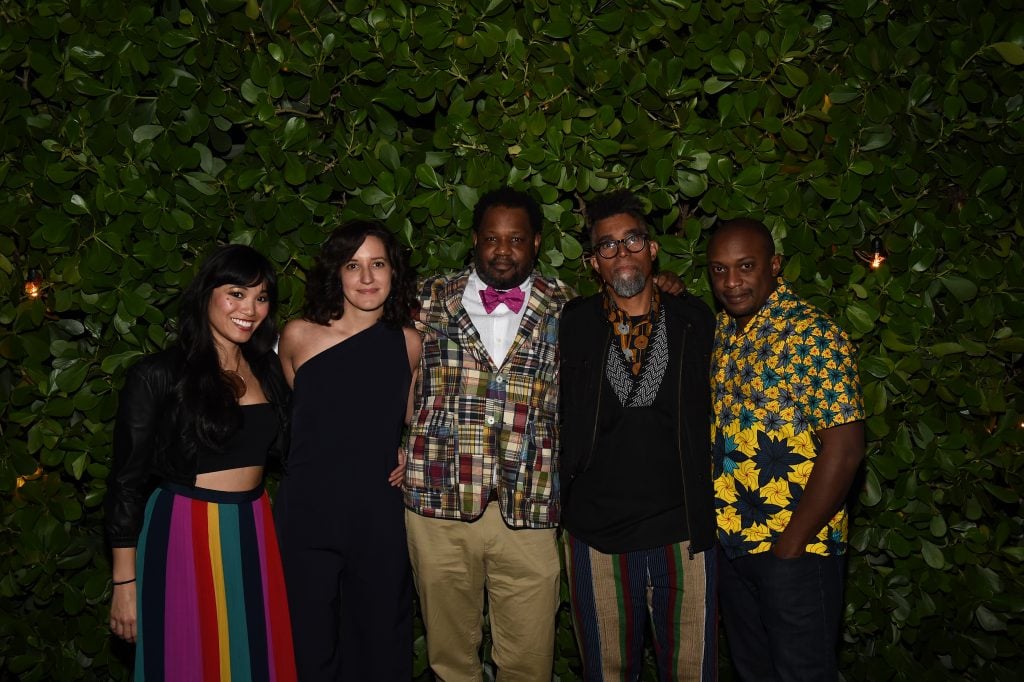Op-Ed
My Art and Tech Company Has a Four-Day Work Week. It’s Made Us More Creative, More Productive, and Much, Much Happier
Kickstarter's Head of Arts explains how to move your arts organization to a more flexible and sustainable weekly schedule.

Kickstarter's Head of Arts explains how to move your arts organization to a more flexible and sustainable weekly schedule.

Patton Hindle

On March 9, 2020, I grabbed my laptop, charger, and a box of business cards from my desk at Kickstarter to head home for what we assumed would be a few weeks of fully remote work. As we all now know, the world shifted dramatically and those business cards gathered dust for months.
While the shock of the pandemic immediately altered our everyday professional and personal lives (certainly, in some grueling ways), it also opened up room for possibilities we may not ever have considered around how we work and live. Historically, when cataclysmic events occur, societies seize an opportunity to make significant structural changes and build a world that better fits their needs. We have long relied on creatives to think outside the box and challenge traditional structures, so why shouldn’t the arts be among the first to respond to this moment?
Since the onset of the pandemic, Kickstarter, an organization co-founded by an artist and run by creative people, has made significant decisions about the future of our work.
Last year, we announced that we would join a global trial of a four-day work week in the spring of 2022 as a means to focus on productivity over hours and give time back to our staff to recharge, spend with family, and pursue creative passions. We believe that a happier, well-rested employee is someone who will be more deeply engaged with their work and therein, a more efficient worker. Our goal with this leap is to ensure productivity while allowing for greater employee flexibility. Early signs show that this is, in fact, happening.

Photo: Debrocke/Classicstock/Getty Images.
I am fortunate to work at a company that was better positioned than many public-facing arts entities to transition to more flexible work, but my foray into this space was and has always been creator-centric. Before becoming Kickstarter’s Head of Arts, I worked at two galleries and then opened my own in Chinatown. I have written books about the gallery business and been a member of creative collectives. I know intimately the challenges within the field. Even before the pandemic, whenever I spoke with gallerists, curators, funders, journalists, and more, all reported being burnt out. If you add in the fact that 65% of arts workers in New York City are women, many with children, that burnout increases exponentially.
Research has shown that countries where the highest number of hours are worked have the least productive workforces: the United States, commonly considered a highly productive country, actually falls fifth on a global list in GDP per hours worked, while Luxembourg, Ireland, Norway, and Belgium all work significantly fewer hours but achieve a higher GDP ratio. The number of hours worked is not associated with actual productivity. For members of the creative economy, our minds need rest to think and dream about that next exhibition, the perfect client for a new sculpture, or the ideal medium for form within which an artist explores a concept.
Our four-day work week pilot began on April 1 and I have personally felt a significant impact in these last six weeks of working four days. I feel excited to see art again, I’m writing more, I’m baking far too many wild cakes—and perhaps most importantly, I am incredibly present with my stepson and partner, which has had positive ripple effects throughout our shared lives. It has also allowed me greater space to envision many systemic challenges artists are facing and how my work at Kickstarter and beyond could help to alter those circumstances.
There are solutions for museums, foundations, galleries, and more, especially when we consider how much of our work is performative rather than truly productive.
To achieve a four-day work week, arts organizations need not remove a work day from their traditional weeks. They could offer this same benefit to employees by implementing a rolling coverage schedule (we do this ourselves at Kickstarter with our external-facing teams) so that specific workers are available on the days when most of their work traditionally takes place––a salesperson at a gallery would work Wednesday through Saturday, while more administrative work takes place Monday through Thursday, for example.
Another area ripe for improvement is art fairs. While we have finally begun to see some reduction in the number of days fairs are open for, they still require a significant amount of labor from gallery staff, art handlers, fair staff, hospitality, security, and more. Between the install, deinstall, public days, and follow-up, gallerists and their teams often work six- to seven-day weeks. Yet many of us know that the last day of the fair is often unnecessary for sales, so why have it? (Just walk around a fair on the final day and see how many dealers don’t even show up.) Shorten the public access by a day, as Art Basel Miami Beach and NADA did in 2021, and allow galleries the time to recover.
Cultural organizations also do not need to be monoliths to implement these changes. Kickstarter employs under 100 people, similar to many museums. In order to free up time for core work, our teams have worked to reduce internal meetings and record presentations when someone isn’t available in a given time frame so that they can catch up asynchronously.

From left to right: artist Risa Puno, Kickstarter Head of Arts Patton Hindle, artists Steve Locke, Dread Scott, and Hank Willis Thomas at a December 2019 Kickstarter dinner in Miami honoring Locke. Courtesy of Patton Hindle.
In all of these spaces, managing external relationships and one’s availability are also essential. Most of my work is external facing, so in the build-up to the pilot, I shared my work schedule with most artists and organizations that I am collaborating with so that there were no surprises. You might also be surprised to see how many people celebrate that shift for you. My out of office on Fridays has enabled many to reply with glee. Just last Friday an artist I’ve been working with replied to my out of office with, “That is AWESOME. I hope you don’t open this up today. :)” Being upfront about boundaries and expectations will help normalize them across the industry—and may even inspire others to find the possibilities in their own practices.
Kickstarter is a company that uses technology to help share and fund creative work, and I am keenly aware that we are able to be fully remote in ways that many structures in the arts that depend on live events and in-person interactions are not. But there are solutions for museums, foundations, galleries, and more, especially when we consider how much of our work is performative rather than truly productive.
We have been told for decades that working in the creative economy is not just a job but an identity. But what happens when that identity becomes more about keeping up an appearance than about fulfillment? At what point is it extractive? It is time for the arts workforce to do what it does best—reimagine our world and build it how we want it to be.
Patton Hindle is Head of Arts at Kickstarter. She serves on the Board of The Laundromat Project and Art Funders Forum.